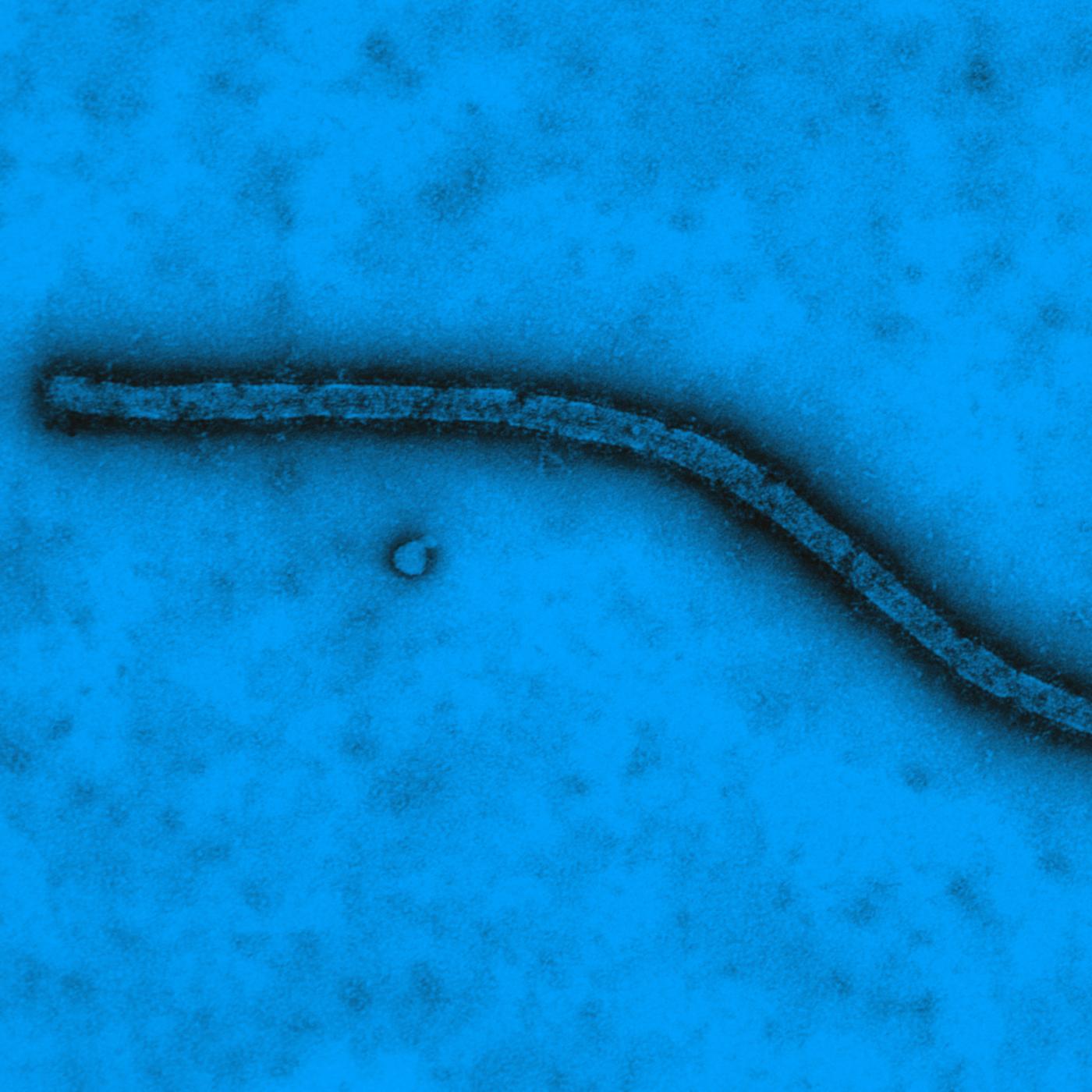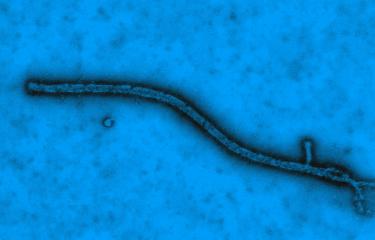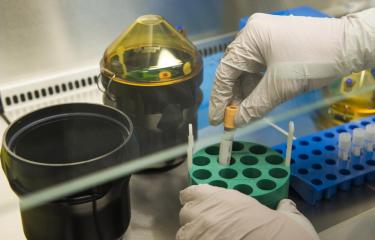Cause
Fruit bats are thought to be the natural hosts of the Ebola virus. Although the virus is no longer harmful for them, it is pathogenic in other wild animals from tropical rainforests, such as monkeys. Humans can be contaminated when handling these animals (butchering bushmeat, etc.). The virus then spreads among populations by human-to-human transmission.
In humans, the Ebola virus can be transmitted through direct contact with the blood or bodily fluids of sufferers, or through indirect contact with environments that have been contaminated by these fluids. The virus is not contagious during the incubation period. There is a moderate risk of infection in the first few hours after the initial symptoms appear, and a high risk once the disease has taken hold. Patients who have recovered from the disease are no longer infectious, but precautions are necessary, as men can continue to spread the virus through their semen up to several months after clinical recovery.
Epidemics are caused by secondary human-to-human transmission. They can be exacerbated if people caring for Ebola virus patients do not take sufficient precautions. Funerals and burial ceremonies in which friends and relatives come into direct contact with the bodies of the deceased also strongly increase the risk of spreading the virus.
The only way to curb epidemics and human-to-human transmission is to take appropriate precautions to avoid infection, including regular hand-washing, isolating patients and not allowing skin or mucosa to come into contact with infected fluids. Physical protection, such as gloves, masks, goggles, gowns and boots, is vital for these purposes. In recent years, two vaccines have been brought to market. One of these has been used to perform ring vaccination during outbreaks.
Symptoms
The Ebola virus disease is a severe acute viral illness. Early signs resemble flu-like symptoms and are hard to diagnose – they include the sudden onset of fever over 38°C, severe weakness, muscle pain, headache and sore throat. These symptoms are followed by vomiting, diarrhea, rash, impaired kidney and liver function and in some cases internal and external bleeding. The incubation period, in other words the time between infection and the first symptoms, varies from 2 to 21 days, but is usually between 5 and 12 days.
Laboratory testing is the only way of confirming the diagnosis. Samples are tested under the strictest possible containment conditions.
Epidemiology
The Ebola virus was first observed in 1976, with two simultaneous outbreaks in Sudan (151 deaths) and the Democratic Republic of the Congo (280 deaths). It was named "Ebola" after a river that flows through the DRC.
The Ebola virus belongs to the family Filoviridae (filoviruses), which has five distinct species: Bundibugyo (BDBV), Zaire (EBOV), Reston (RESTV), Sudan (SUDV) and Taï Forest (TAFV). The Ebola Bundibugyo, Zaire and Sudan strains have caused around 20 outbreaks of the disease in Central Africa, in remote villages near forests. The main outbreaks were in:
- 1995: 254 deaths in the Democratic Republic of the Congo,
- 2000: 224 deaths in Uganda,
- 2003: 128 deaths in the Congo,
- 2007: 187 deaths in the Democratic Republic of the Congo.
Up to that point, the virus had claimed 1,590 victims.
In March 2014, a new outbreak of Zaire ebolavirus was identified in Guinea's forest region, spreading to neighboring countries Liberia and Sierra Leone and reaching urban areas. The virus then spread by air travel to Nigeria and by road to Senegal. By the time the World Health Organization (WHO) had announced the official end of the outbreak in June 2016, it had taken a serious toll, with at least 28,000 officially reported cases and over 11,000 deaths. This is the largest known outbreak to date. A further large-scale outbreak has since occurred in the Kivu region of the DRC and the virus has moreover reemerged in this country on three occasions. Finally, a rapidly contained outbreak took place in Guinea in 2021.
Treatment
Sufferers of Ebola virus disease need intensive care to treat the symptoms (fever, pain and dehydration). In addition to the two available vaccines, monoclonal antibody-based treatments have proven relatively effective in humans and may therefore be used to supplement support treatments.

Ebola 2013-2016: lessons learned and how to respond to new epidemics
June 2021





